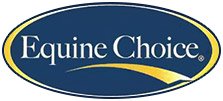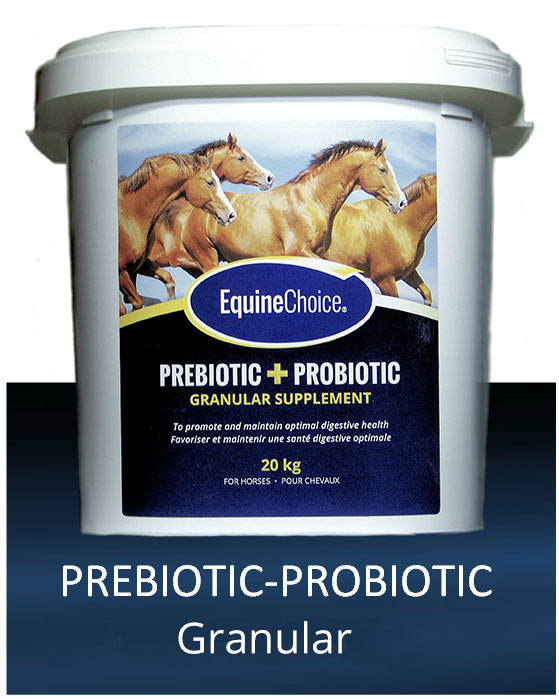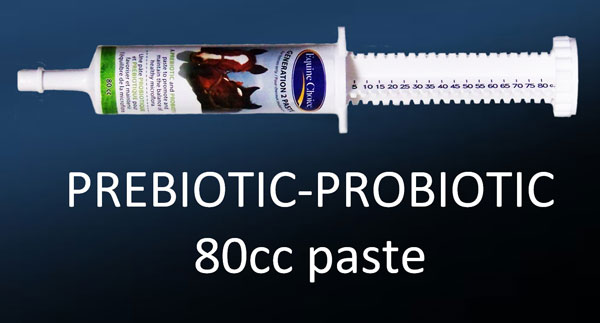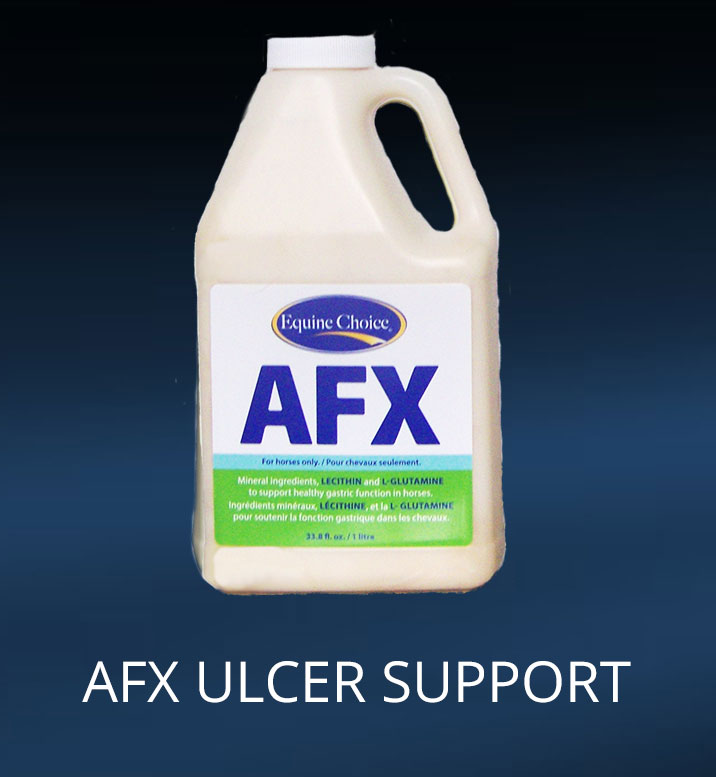EQUINE CHOICE
New *GENERATION 2* enhancements
probiotics for horses & stomach ulcer support
Prebiotics - Probiotics for Horses
Gastro - Intestinal Stomach Ulcer Support
Encapsulated Yeast tested by EFSA in Europe. Safe, effective gastro-intestinal support
NOT all prebiotics-probiotics are created equal.
Hind gut acidosis is a dangerous malady affecting so many horses today. Find out
how you can prevent this by keeping your horse's nutrition and hind gut support optimal.
Equine Choice uses patented "ENCAPSULATED" prebiotic - probiotics for horses.
Live cell beneficial yeast actually survive and make it to the hind gut!
CONTACT US to find out more about our products and
how to optimized your feed programs.
THE SKINNY on Prebiotics and Probiotics for horses:
What every horse owner needs to know
Critical knowledge that can help you manage and support key health & hoof
issues in your horses.

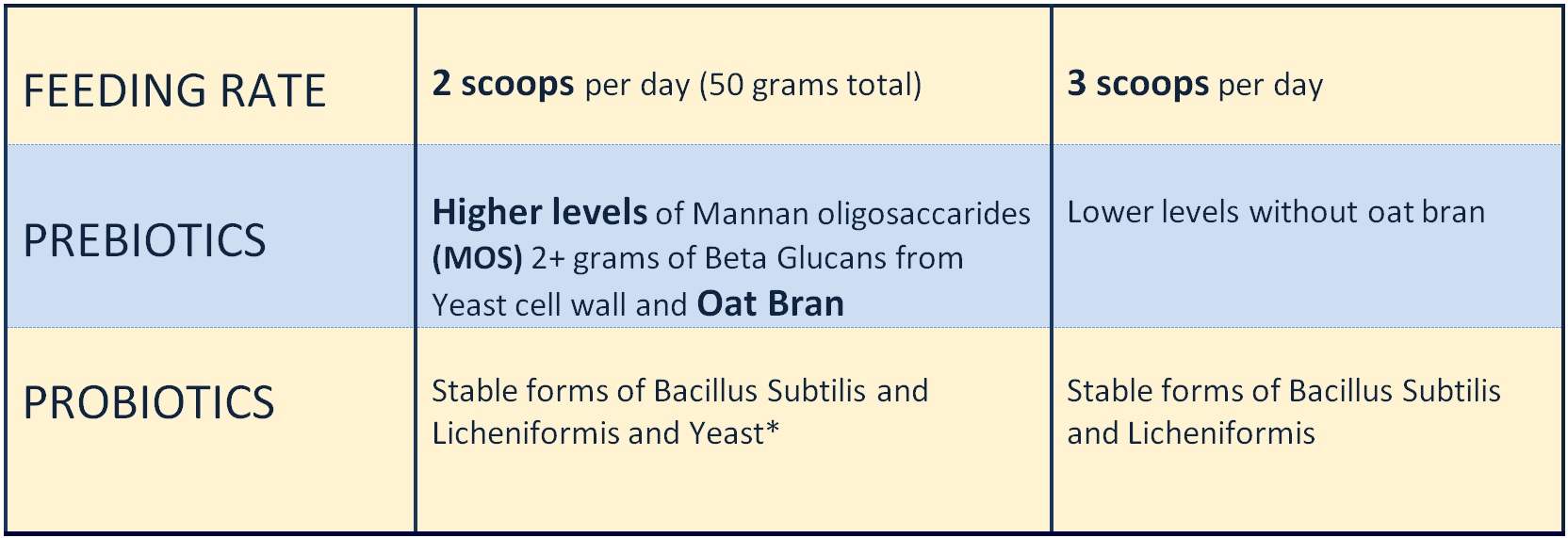

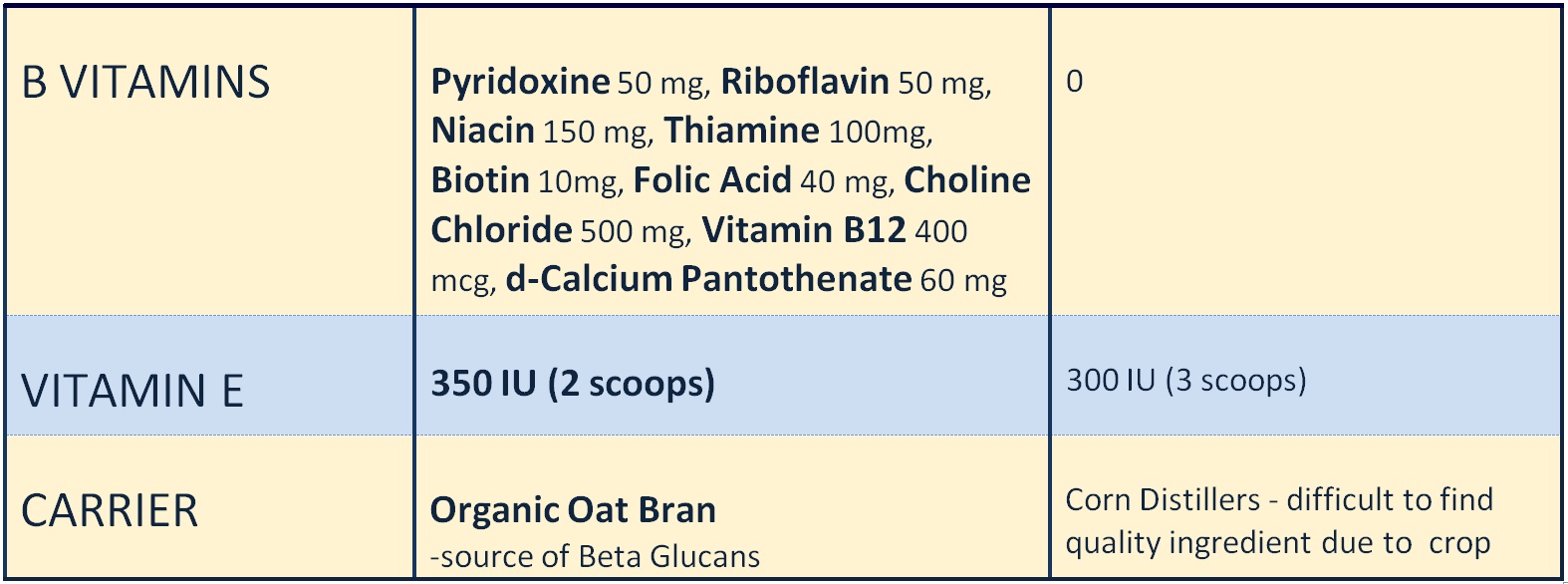

Next Generation Equine Nutrition Care
The why behind Equine Choice Prebiotics - Probiotics for horses
SPRING & FALL PREVENTIVE CARE
Good quality forage in the form of grass pasture or hay is the staple diet of horses to provide adequate fibre that microbes ferment. A byproduct of this fermentation are volatile fatty acids-a safe, primary energy source to fuel the horse's body.
Plants produce their own preference of energy sources utilizing simple sugars, starches and fructans to fuel the plant and provide rigidity to the plant structure. When horses ingest forage, they ingest varying amounts of these plant sugars which, in excess levels, can cause insulin spikes or intestinal lactic acidosis dependent on the type of sugars ingested.
Generally, starch and fructan levels (sugars) peak during new growth early in the Spring, immediately after a stress period ends, and in the fall. The plant stores most of it's sugar in the lower 3-4 inches of the plant stems, and in its budding seeds - and levels can vary significantly due to a variety of factors & influences.
STARCH OVERLOAD & FRUCTANS - The HINDGUT CONNECTION- LACTIC ACIDOSIS Horses often over-eat grass and hay, trying to meet their daily requirement of protein- because as a rule mixed grass or grass hays tend to be low in digestible protein. By ingesting larger quantities of forage beyond their fiber requirement, horses often develop "hay bellies" and more importantly, consume excessive levels of starches and fructans in their diet.
Excess starch not absorbed in the small intestine enters the hind gut (large intestine). Here, both starch and fructans are broken down through selective microbial digestion. This causes a shift in the micro-flora population of the large intestine. Healthy numbers of beneficial fibre-fermenting microbes decline and die off, displaced by the "sugar eating" microbes which produce excessive levels of lactic acid.
The PH drops and acid levels increase. The wall lining of the intestine weakens, with a predisposition to develop "leaky gut" allowing dangerous toxins to enter the blood stream and cause secondary issues such as laminitis.
UNDERSTANDING FLUCTUATING SUGAR LEVELS IN GRASS- IMPACT ON THE HORSE
- Grasses are generally higher in sugar levels mid May to mid June during maximum plant growth and seed development
- Sugar levels rise again as the plant nears the end of its seasonal cycle, fortifying the plant and root system, preparing for hibernation
- Some plant species (warm weather grasses) peak during mid summer when temperatures are hotter and there is new growth evident in the pastures- a consideration for easy keeper/metabolic horses. C4 grasses predominantly store Starch as their storage sugar
- Cool weather grasses can have a resurgence of growth early fall after a long hot summer once cooler temperatures occur, ideal to their growing preference. C3 grasses predominantly store Fructan
- Plants utilize sugars as an energy source for cellular activity. As well, they make up part of the plant's rigid-like structure
- Green plants use a process called photosynthesis that converts sunlight, water and carbon dioxide into oxygen and sugar
- Rate of photosynthesis will depend on the variability of water and sunlight. During times of stress, less sugar will be made, whereas under optimal conditions maximum photosynthesis will occur and replenish depleted energy reserves.
- In the evening plants respire, depleting the reserves of sugars (produced by photosynthesis) to supply the plant until daylight when the cycle repeats
- Rate of respiration is directly related to temperature. As temperatures drop, respiration slows, so unused sugar stores in the plant are available to the horse.
Taking all these things into consideration, you can see how sugar levels in the plant can vary, according to seasonal growth patterns of individual plant species, variances in sunlight availability, moisture, and stress from competing weeds/soil nutrient availability. Generally we see increased plant sugars in Spring and Fall and immediately following a stress cycle once conditions improve, but its also prudent to evaluate the type of grasses in your field or paddock to understand the impact of their unique properties as a food source for your horse.
WHY PREBIOTICS-PROBIOTICS WORK
EQUINE CHOICE® Probiotics is a holistic approach to digestive tract health.
Probiotics for horses support the hind gut, optimizing conditions for important beneficial microbes to flourish, maximizing nutrient absorption, and maintaining healthy gut PH to discourage LACTIC ACIDOSIS.
EQUINE CHOICE® Probiotics stop the cycle.
The beneficial bacteria re-establish themselves. Acidic levels decrease, PH increases, and healthy VFA production returns supplying balanced energy to the horse.
Healthy intestinal walls support tight mucosal lining that filters harmful toxins from crossing the membrane into the blood system.
Gut function improves to optimize absorption of important B-vitamins via microbial synthesis improving immune system and hoof health.
Additional enzymes are added to our product for optimal digestion of proteins and carbohydrates.*
*it is important to assess and balance the carbohydrate intake in feed concentrates and forage when probiotics for horses are used in the diet.
RESEARCH - PROBIOTICS FOR HORSES VIABILITY STUDIES
Dr. Scott Weese, University of Guelph, tested many currently marketed probiotics for horses, evaluating for content. Few probiotics met their claims and did not reach the hind gut alive due to caustic gastric acids or from denaturing of the yeast from heat-processing when added to feeds.
EQUINE CHOICE® probiotics for horses is registered with the Canadian low-risk veterinarian products program registry and the encapsulated yeast has been approved for use in horses by the EFSA in Europe. Equine Choice prebiotic-probiotics for horses uses patented technology that encapsulates the live yeast to promote survival and viable delivery to the hind gut. Corroborating research studies have been conducted by Dr. Derek Cuddeford, University of Edinburgh showing the efficacy of the encapsulated yeast.
The why behind Acid FX Stomach Ulcer Support
ULCERS, ULCERS, ULCERS
Trainers have known for many years about the detrimental effect of stress on horses in work and training. Many horses suffer ulcer development daily and often present with sensitive girth area, sucking back, lack of appetite especially after trailering, lack of focus and behavioral problems. Hard exercise exacerbates the formation of ulcers due to the very small stomach size of which the upper portion of stomach is not protected from acid. With any form of physical exertion or tenseness, the horse constricts his stomach muscles and the acid can splash up onto the unprotected stomach lining causing ulcerated lesions and pain. Horses with ulcers often display grouchy attitudes with pinned ears and are disinterested in feed.
EQUINE CHOICE ACID FX
Acid FX is an excellent blend of all-natural ingredients including lecithin, L-glutamine and other stomach lining protectants that test drug-free. It is VERY effective in coating the stomach lining to support a healing environment and supports against new ulcer developments. Equine choice is used in the racing industry where ulceration is rampant, with very good success - many of these horses returning to eating and improved attitude and performance using Acid FX and Equine Choice prebiotic-probiotic daily.
Acid FX is extremely helpful for long term strategies as an assist because these nervous, hard-working or ulcer prone types of horses have tendencies to develop ulcers often within 12-24 hours of a stressful event. It is aimed to coat the STOMACH, while the probiotic protects against colonic ulcer formation in the intestinal tract.
Acid FX can be given safely, daily and indefinitely as it uses non-drug ingredients (also doesn't test with our track and show horses) with good coating protection of the stomach lining without altering production of hydrochloric acid in the stomach.
OMEPRAZOLE AND ACID FX Working together
Omeprazole is the first line of defence usually indicated via veterinarian care for serious ulceration in the horse. Omeprazole works by reducing HCL production to reduce acid splashing to the top unprotected areas of the stomach lining. Acid FX pro-actively coats and protects the lining at a very affordable cost to the client. It does not interfere with acid production which is something to consider long term. There is no way to test currently to determine which horses produce in excess of normal volumes of HCL to figure out long term dosage rates of omeprazole to maintain enough acid production to degrade food. Acid is an important proponent in the stomach to break down large food particles into small particle digesta- required for efficient absorption in the small intestine with minimal spill-over into the hind gut.
A consideration with long term use of omeprazole and reduction to HCL production- the stomach may become more alkaline because pepsin still continues production at the same rate (alkaline) and without the higher acidic environment to keep some of the undesirable bacteria under control, these less acidic stomach environments around PH 5 can house larger populations of undesirable bacteria. So once ulcers are cleared up by the omeprazole, we find long term pro-active measures to coat the stomach lining, is a safe and affordable maintenance plan to protect moving forward while removal of omeprazole returns the body to full production of HCL acid.
We have very good results with our Acid FX product and our Prebiotic - Probiotics for horses, working together to cover the stomach and intestinal tract. Our clients include horses from all walks and disciplines, with very good results in the racing industry, performance, horses in training and hard work, stressed horses in transport and older, unthrifty or immune compromised horses.



